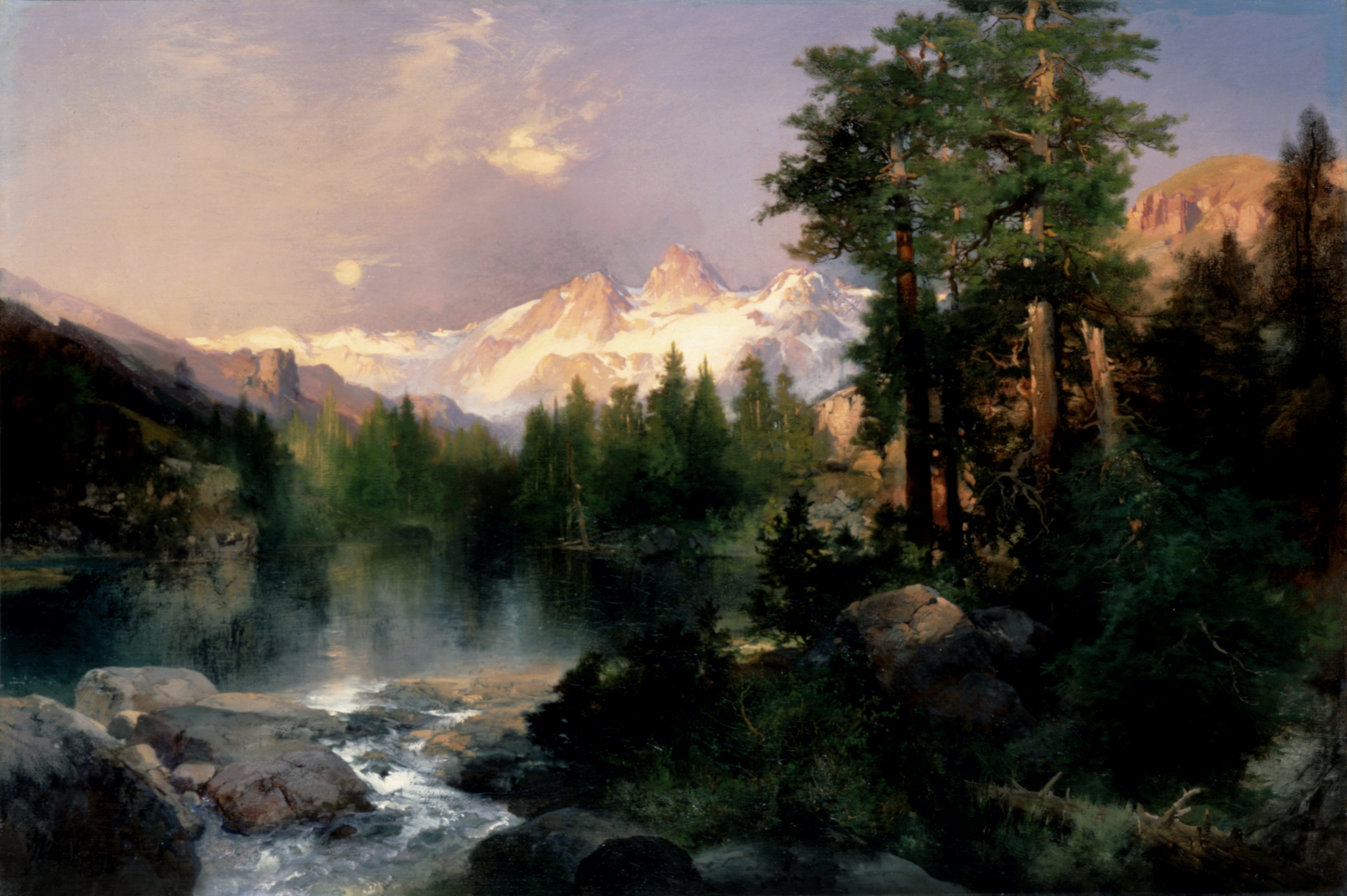Thomas Moran was an American painter and printmaker of the Hudson River School in New York whose work often featured the Rocky Mountains. He was a younger brother of the noted marine artist Edward Moran, with whom he shared a studio. A talented illustrator and exquisite colorist, Moran was hired as an illustrator at Scribner's Monthly. During the late 1860s, he was appointed the chief illustrator for the magazine, a position that helped him launch his career as one of the premier painters of the American landscape, in particular, the American West.
Moran's vision of the Western landscape was critical to the creation of Yellowstone National Park. In 1871 Dr. Ferdinand Hayden, director of the United States Geological Survey, invited Moran to join his expedition team into the then-unknown Yellowstone region. Hayden was just about to embark on his journey when he received a letter from financier Jay Cooke presenting Moran as "an artist of Philadelphia of rare genius." During 40 days in the wilderness area, Moran documented over 30 different sites and produced a diary of the expedition's progress and daily activities. His sketches, along with photographs produced by William Henry Jackson, captured the nation's attention and helped inspire Congress to establish the Yellowstone region as the first national park in 1872. Moran, along with Albert Bierstadt, Thomas Hill, and William Keith, are sometimes referred to as the “Rocky Mountain School” of landscape painters because of all of the Western landscapes they created.
Moran's paintings along with Jackson's photographs revealed the scale and splendor of Yellowstone when written or oral descriptions failed, persuading President Grant and Congress that Yellowstone was to be preserved. Yellowstone likewise had a significant influence on the artist. His first national recognition as an artist, as well as his first large financial success, resulted from his connection with Yellowstone. He even adopted a new signature: T-Y-M, Thomas "Yellowstone" Moran. Just one year after his introduction to the area, Moran captured the imagination of the American public with his first enormous painting of a far-western natural wonder, The Grand Canyon of the Yellowstone, which the government purchased in 1872 for $10,000. For the next two decades, he published his work in various periodicals and created hundreds of large paintings. Several of these, including two versions of The Grand Canyon of the Yellowstone (1893–1901 and 1872) and Chasm of the Colorado (1873–74) are now on view at the Smithsonian American Art Museum. The Three Tetons hangs in the White House.
- Clinton Pittman
P.S. If you're into landscapes, read here how to do 21st century Grand Tour.


 Thomas Moran
Thomas Moran